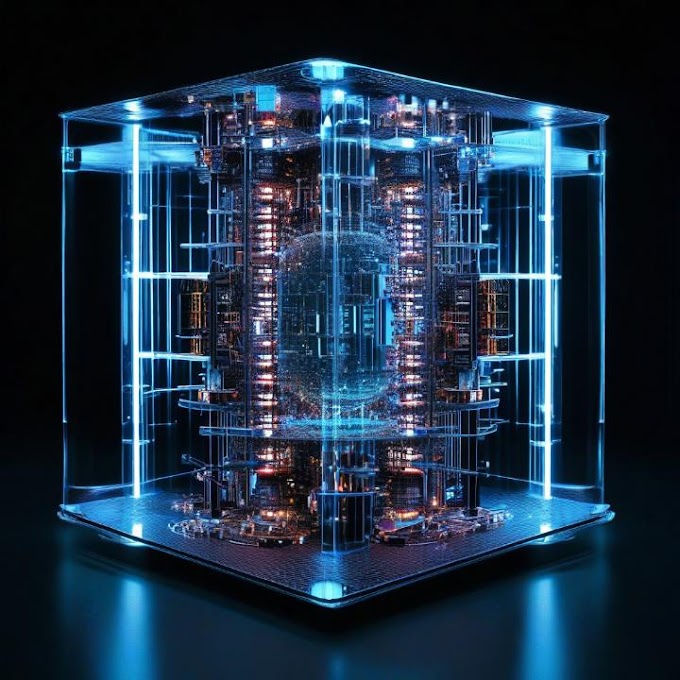Augmented Reality-Easy explanation
What is Augmented Reality ?
Augmented Reality is the technique to mix user’s real world perception with 3D digital information/object. Suppose a windshield of a car is advanced to show map and direction to navigate to the destiny. It an example of AR. In the beginning of AR uses were simple like for example connection of a complicated circuit is drawn in technician’s glasses/goggles. See the examples below for better understanding.
.jpg) |
| A complicated circuit is drawn in technician’s glasses simple AR |
Above application is simple application of AR. I would like to add 1 more very simple applications that I have been used of many years in my profession. Please comment below if you think it is not an example of AR uses. In telecom sector when we find azimuth of an antenna in a manual compass having marked mirror in front it. In this case also we blend real perception with the compass data aligned with the marker in the mirror.
 |
| Finding Azimuth of an antenna with mirror compass- simple use of AR |
.jpg) |
| Yellow marker in the rear camera display of a car |
Now we see development of AR making it complicated. In the above example yellow marker in the rear camera display of a car showing car’s position when it will move backward. Here the yellow marker is blended with the camera view with some equation of distance in the image and marker’s position. This application can be enhanced if the camera image data is processed with an object recognizing processer which can give the user a warning signal/color(red) when an obstacle is detected on the path of the car.
.jpg) |
| A windshield of a car is advanced to show map and direction to navigate to the destiny |
A windshield of a car is advanced to show map and direction to navigate to the destiny, in this example first we need to upgrade our windshield making it capable of displaying back groundless navigation application. Where the navigation application may or may not be built in but there must be processing for the navigation application.
There are many applications AR now a day. One of the common application is the camera filters used in the social media apps, many are uses of AR. Animation camera filters might not be the example of AR.
From the above we have seen there are simple and complicated AR application. AR applications can be much more complicated which may require separate and powerful data possessing devices as AR becomes more complicated.
AR are basically of two types based on there working principles. Marker based and Non Marker based. Non marker based AR application comparatively complex and require more data processing. The above all examples are of marker base AR applications. Now we will discuss a non-marker based AR application. Let’s assume I have a fantasy of living with a tiger but I don’t have so much capability to raise a tiger and train it to live with me. Somehow I want to live my fantasy so bought a AR device mounted like goggles which has the facility to mimic my real time perception of looking and hearing and blend this data with a 3D tiger, which can make tiger sound and can recognize object and act accordingly. This is a non-marker AR application which is much more complicated. In this AR application first of all we must need a display attached to a camera, which can transmit my peripheral view directly to the display. Or an advanced goggle which can act as a display also. Then we must need a headset to hear the additional sound generated by processor. Now we need a powerful processer which can blend a 3D tiger in my real-time view with sounds according to the act of 3D tiger. The tiger’s act must according to the surrounding objects/surface. So the processor must have object recognizing ability with fast runtime to cope up with my real time perception.
Basic difference between AR(Augmented Reality) and VR(Virtual Reality):
The basic difference between AR and VR is environment provided to the user. AR devices gives a real time, real perception with the desired artificial data blended to the user. Whereas VR gives some total artificial surroundings with enhanced perceptions fully created artificially.
Conclusion:
If we exclude fantasy and social media image filtering, you see there are much more important and helpful application of AR. In military purpose AR can be very helpful in navigation. For example, suppose a vehicle windshield showing direction to the destination, weather, also can show mines detection for a smooth drive. AR can be used in military goggles to locate/detect enemy or target enhanced with some detection algorithm. In medical uses it can be used as critical and complex surgery guide. Also in educational purpose there is a wide range of AR uses. Many education practical practises can be enhanced by AR which can save cost. In technical and construction uses AR can be used to measure length, angle, distances etc.in real time.
FAQ:
1. What is augmented reality in simple words?Answer: In simple words augmented reality is mixing digital information/object in real time perception of a user.
2. Where is AR used in real life?
Answer: AR is used many real life purposes. For example, you can use AR application to see how different glasses fits on your face.
3. What is difference between VR and AR?
Answer: The basic difference between AR and VR is environment provided to the user.
4. Who invented augmented reality?
Answer: In 1968, Ivan Sutherland first used a head mounted display system.
5. What is the future of AR?
Answer: AR will be widely used in the future because of its real time perception ability with enhanced digital information.






.jpg)
